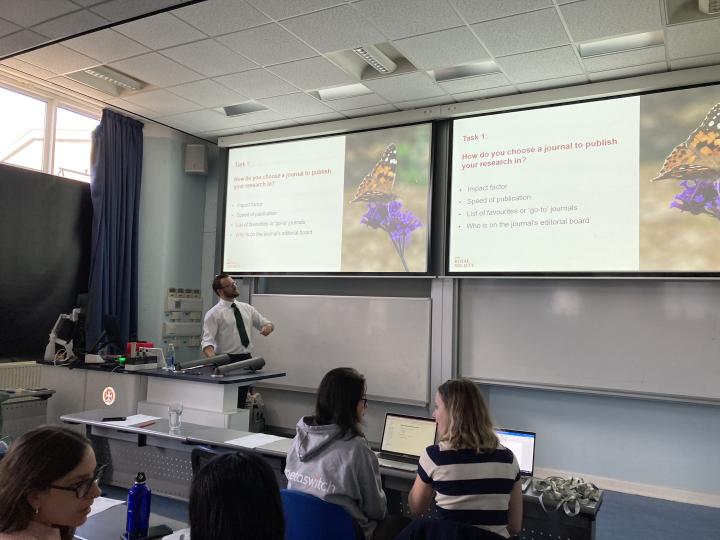How to Publish a Scientific Paper’ Royal Society Publishing Workshop
On Thursday 20th April, editors from the Royal Society journals led a workshop for early career researchers on how to publish a scientific paper.
Authors: Kirsty Macphie and Silvia Shen
Edited by: Deidre McClean

On Thursday 20th April, editors from the Royal Society journals led a workshop for early career researchers on how to publish a scientific paper. Shalene Singh-Shepherd, senior publishing editor for Proceedings B, and Andrew Dunn, senior publishing editor for Royal Society Open Science, were invited by Professor Loeske Kruuk to provide an accessible introduction to academic publishing.
Choosing the most suitable journal:
The workshop began with an introduction to the multitude of journals available under Royal Society publishing. The conversation ranged from relevance of content to participants’ previous experiences concerning the speed of publication. They presented advice on how to assess the suitability of a journal to your research, which included looking into the journal’s aims and scope and considering whether your work has specific or broad appeal and how novel or confirmatory it is. They also discussed the importance of considering other factors, such the journal’s ability to advertise papers through traditional and social media channels as well as the journal’s reputation within the field.
Coping with the challenges and frustrations of publishing
Group discussions brought up the time-consuming process of having to reformat manuscripts when moving between journals and the difficulty of choosing the right journal. For many new researchers, the editing process can seem obscure and daunting. Fortunately, Shalene and Andrew detailed the behind-the-scenes process of manuscript-to-publication. An emphasis was put on the importance of checking the author guidelines prior to submitting (many journals will have a summary list or table). We also discussed the importance of complying with journal policies and requirements regarding ethics, conflicts of interest, authorship and meeting international standards for scientific practice.
Practicalities:
The workshop moved on to cover the practicalities of preparing a manuscript for submission, covering the general components required within a manuscript and the importance of looking into the relevant fees ahead of submission. We also looked at how to utilise a cover letter to communicate with the editors, how and why to recommend peer-reviewers and the value of engaging with press releases to promote your work.
Future of research and open access
The editors outlined the different forms of open access and open science, including open peer-review, preprints and pre-registration. Particularly interesting was the concept of open data, and how to pick the right repository for your data. We also discussed open science in the context of global inequalities in access to academic resources, which emphasized the importance of pursuing the open science agenda. At the end of the session, Shalene and Andrew answered any questions we had about publication, such as concerns about the costs and specificity of journals for different types of papers.
Seeing the publishing workflow from the viewpoint of the editors and meeting people directly involved behind the scenes has provided us with valuable insights and increased confidence in pursuing publications moving forwards. Hopefully this will help clarify the publishing process for others too!

